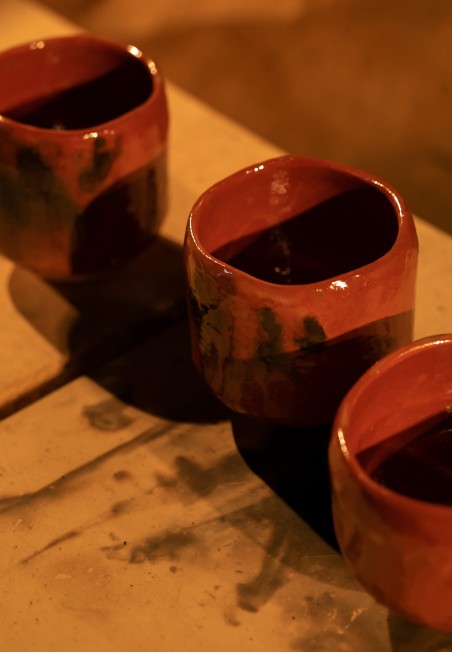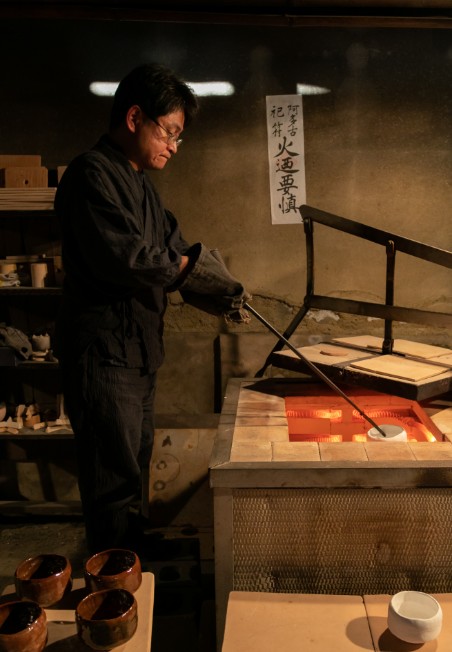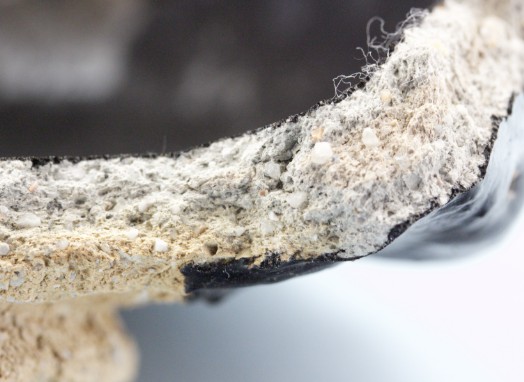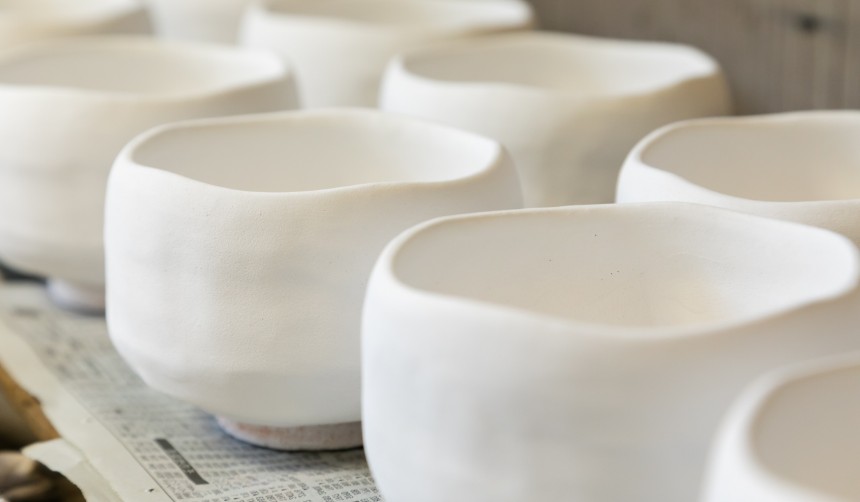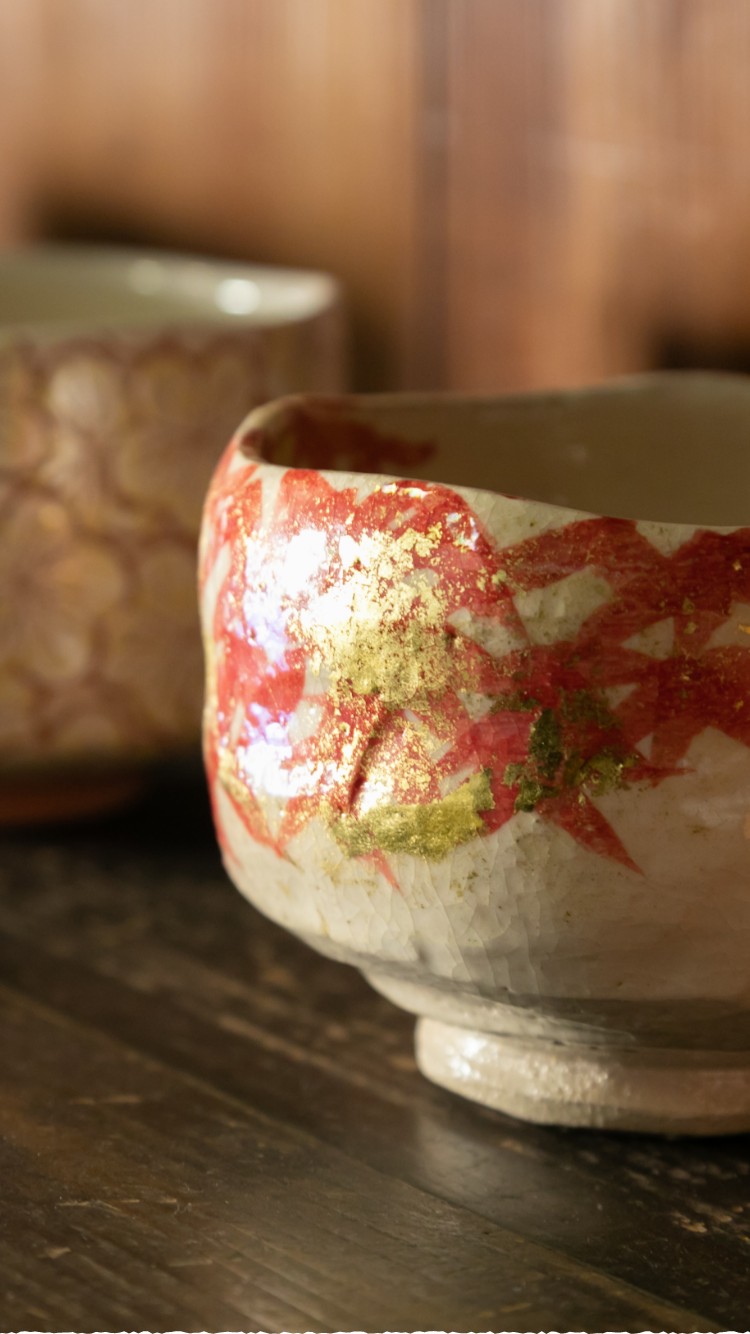
Raku Studio Waraku is established around 1830 in Gion Kyoto Japan.
We mainly produce tea bowls, tea utensils such as lid holders and water jars, and kaiseki tableware.
The policy of Raku is “One and Only”. Same tea bowl never exist.
We prduce a tea bowl in thouotu of “One and Only”.
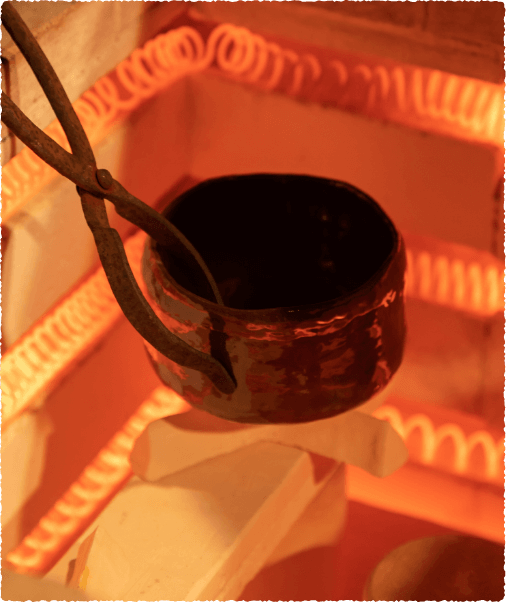
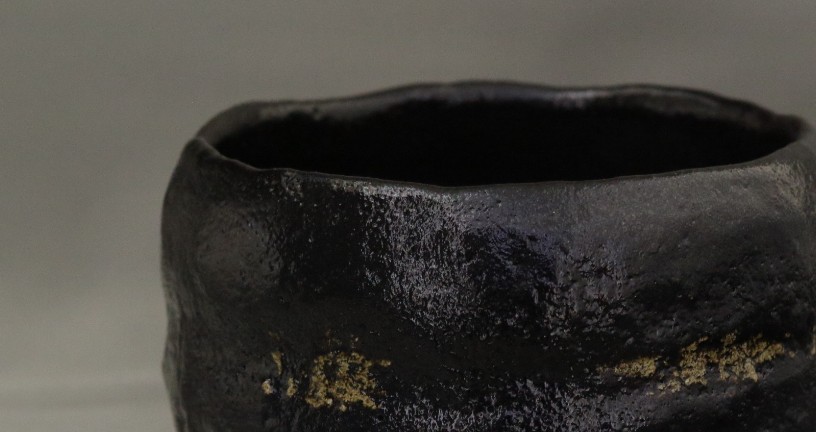
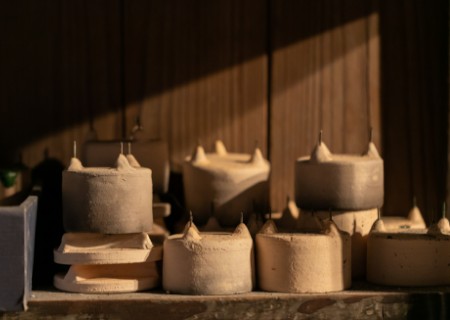
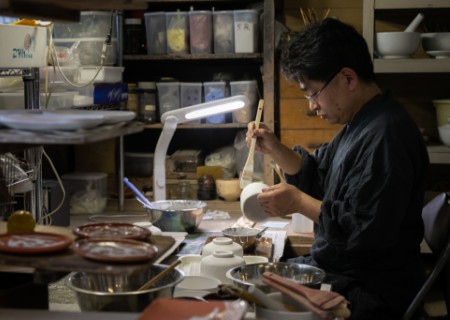
I am the 8th generation of Raku Studio Waraku.
I started our web site in 2016. and update it in 2023.
I would like to transmitt the inoformation of Raku by myself, it is very inportant role for me.
It is our pleasure that many foregn persons are interested in Raku.
At our kiln, we cherish the following ways of thinking and work on production every day.
・Protect: I want to firmly protect what we have accumulated so far.
・Challeng: I want to broaden my horizons by taking on challenges in new fields I had never experienced.
・Nurture: I want to grow what I have challenged.
・Protect: I want to firmly protect what I have accumulated so far.
I will continue to work hard so that I can pass on to the future without losing anything important.
Motoo Kawasaki
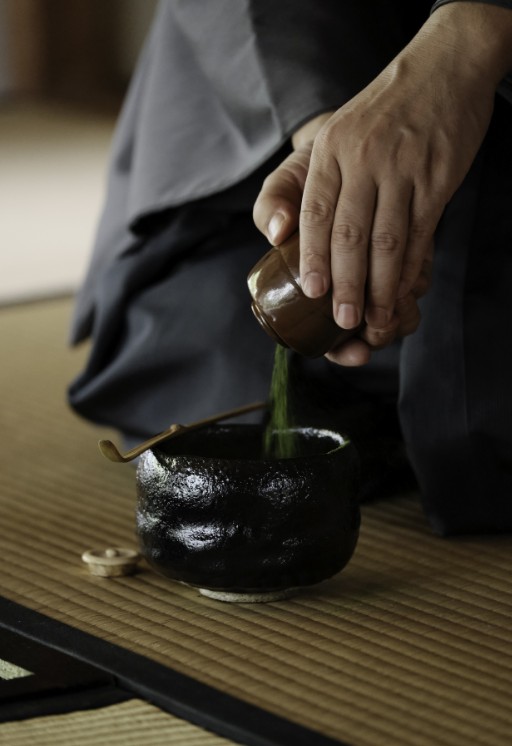
Raku ware is a pottery that was born in the late Momoyama period (latter 16th century) as a tool for the tea ceremony.
Raku ware was created by Chojiro, a tile craftsman, as a bowl for Sen no Rikyu, a master of the tea ceremony, to embody wabicha.
Raku-yaki is said to have originated in Juraku-yaki, which was fired using the clay excavated from the ground of Jurakudai.
Raku ware, which was developed as a tool for the tea ceremony, is a pottery with strong spirituality.
Eliminate decorations as much as possible and compete only with molding and glaze.
In addition, the policy of “One and Only” is strongly rooted, and in many of the production processes, there are processes that cannot be mass-produced.
At the tea ceremony, Raku ware tea bowls are treated differently from other tea bowls and have been treated as very important utensils.
Kuroraku and Akaraku are typical tea bowl of Raku.
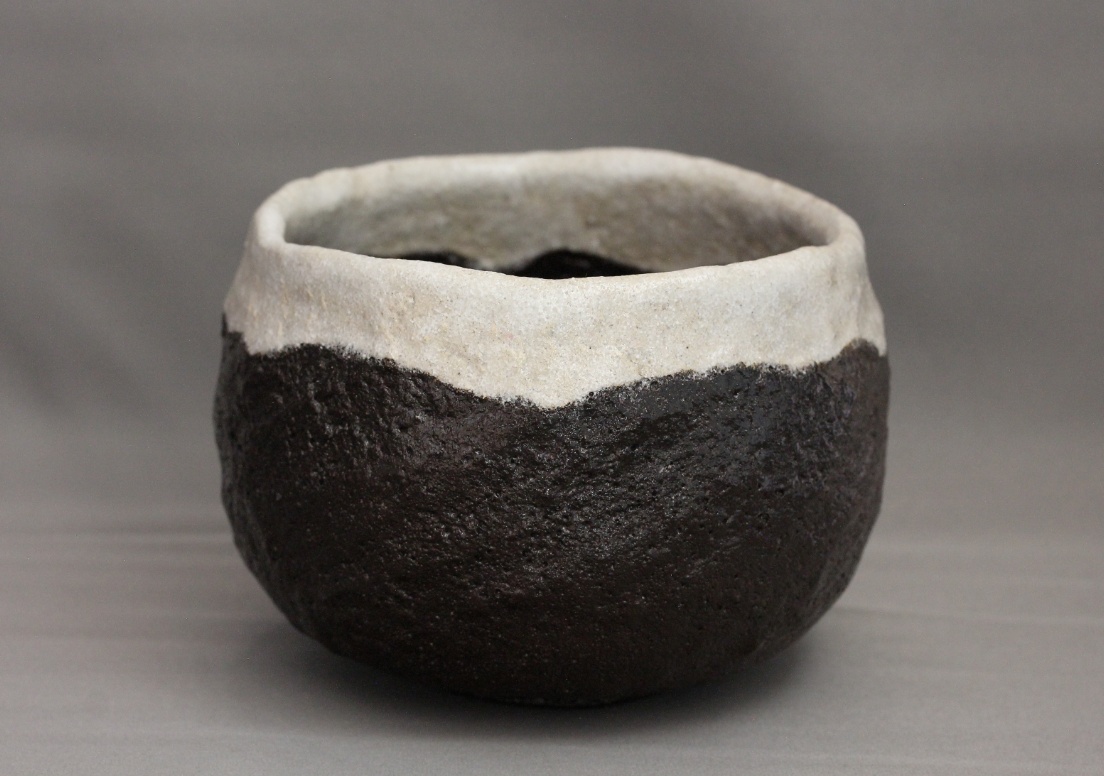
Even today, at many tea ceremonies, the Kuroraku tea bowl is often used as a tea bowl for the first guest.Each tea bowl is carefully molded one by one, based on the “One and Only”policy.
It is important that the shape fits in your hand.In addition, we believe that it is an important element for tea bowls that the weight you feel visually are propotional to the actual weight.
I make tea bowls that looks heavy should be stout and steady.
The main component of the glaze is a natural stone containing a lot of iron called Kamogawa stone or Kibune stone.
By crushing the natural stone into powder and applying it to the tea bowl many times, it is possible to obtain a unique glaze that is glossy and thick.
Raku ware is fired using a technique called Hikidashi (drawer).
In the case of black raku, the tea bowl is placed in a kiln heated to about 1100.℃/2010℉.
After 5 to 10 minutes, when the kiln temperature reaches about 1200℃/2190℉, we pull out the tea bowl.
This is the Hikidashi (drawer) technique unique to Raku ware.
We decide the firing temperature and firing time through this process, we control glaze condition.
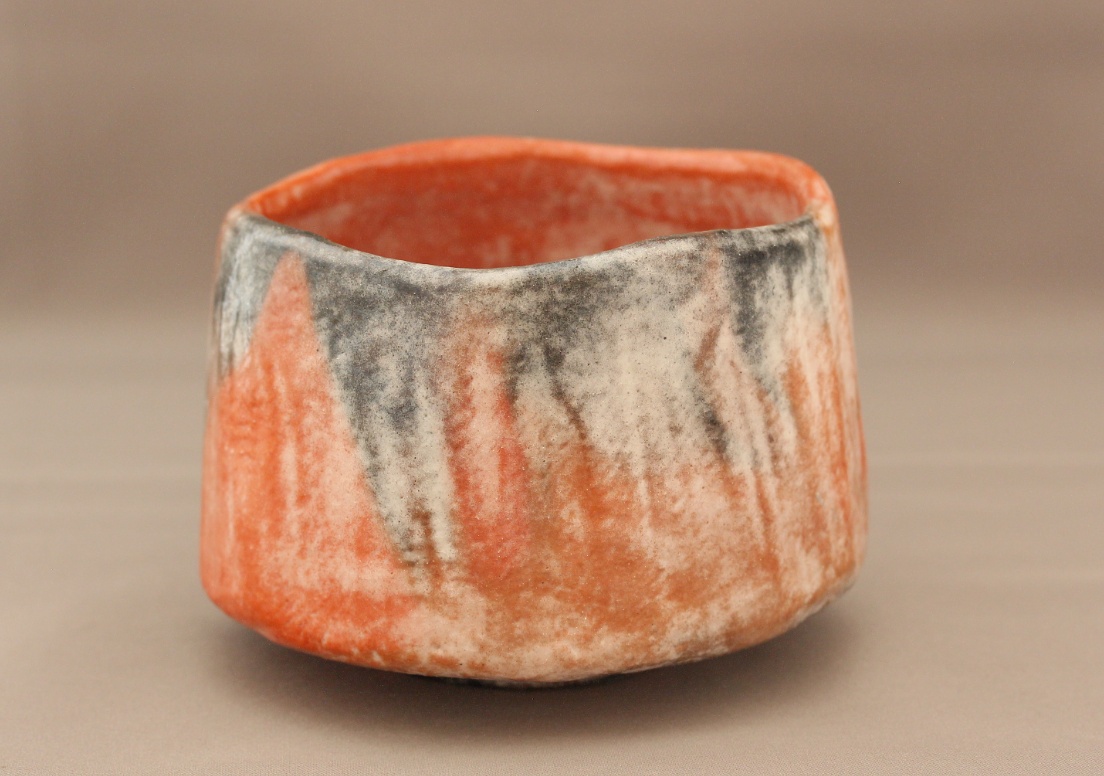
As with the Kuro Raku tea bowl, the molding of the Aka Raku tea bowl is made carefully one by one based on “One and Only” policy.
Originally, I make Red Raku tea bowls with clay containing a lot of iron (red clay).
After bisque firing, a transparent glaze is applied and fired at about 800℃/1470℉, resulting in a pale red color.
Today, in order to obtain a brighter red color, we paint soil with high iron content called “Oudo(黄土)” on cray.
As a result, Aka Raku tea bowls generally have a bright red color.
The firing temperature of about 800℃/1470℉ has not changed since then.
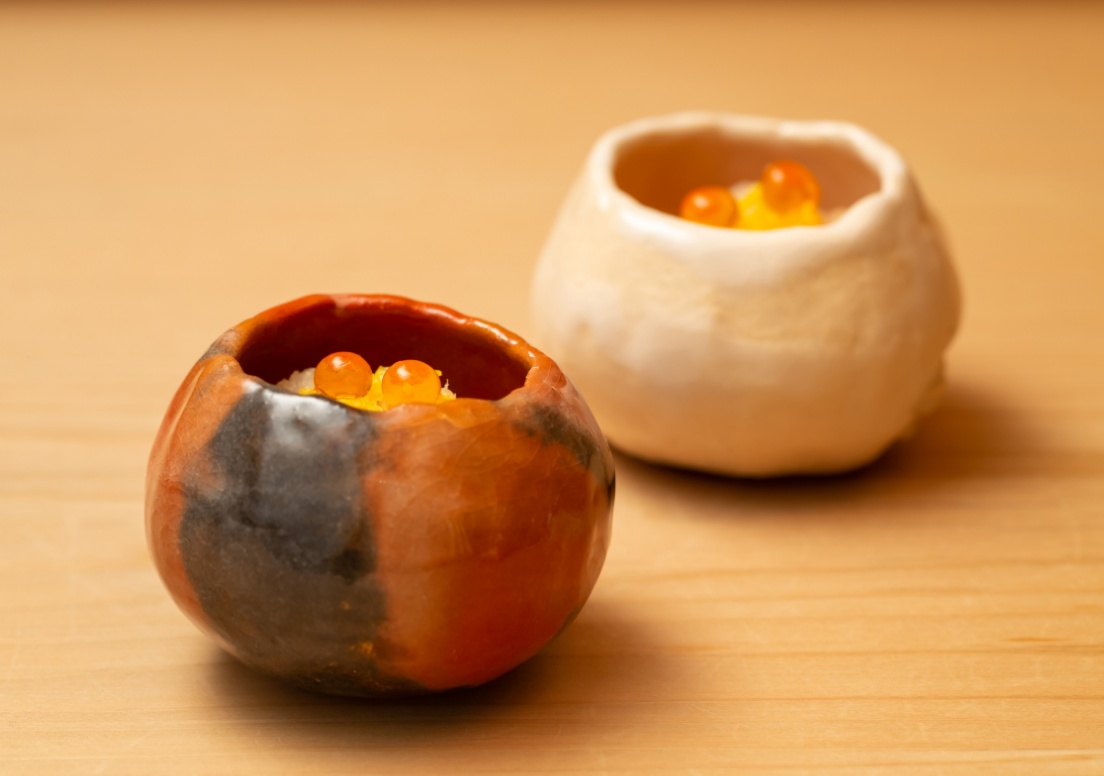
Raku tableware has developed as an utensils for tea kaiseki.
These days, many Japanese cuisine chef use it as a vessel for kaiseki cuisine.
The production of kaiseki tableware is different from the production of tea bowls.
Raku tea bowls are made by hand, as it is believed that each item is unique and that no two are the same.
I make Raku tea bowls based on “One and Only” policy and each item should be unique.
I made tea bowls with hand-forming without electric potter’s wheel.
In the case of tableware, it is required that the shape and size are uniform in units of 5 or 10 pairs.
Therefore, we use an electric potter’s wheel or plaster molds to create a uniform size.
In addition to Akar Raku/Kuro Raku, we use Oribe glaze/Ame glaze/Yellow, etc. to create Raku tableware that bring out the gorgeousness of edibles.
We are also working on remanufacturing existing Raku tableware and custom-made products according to the chef’s wishes.
If you have such a request, please contact us.
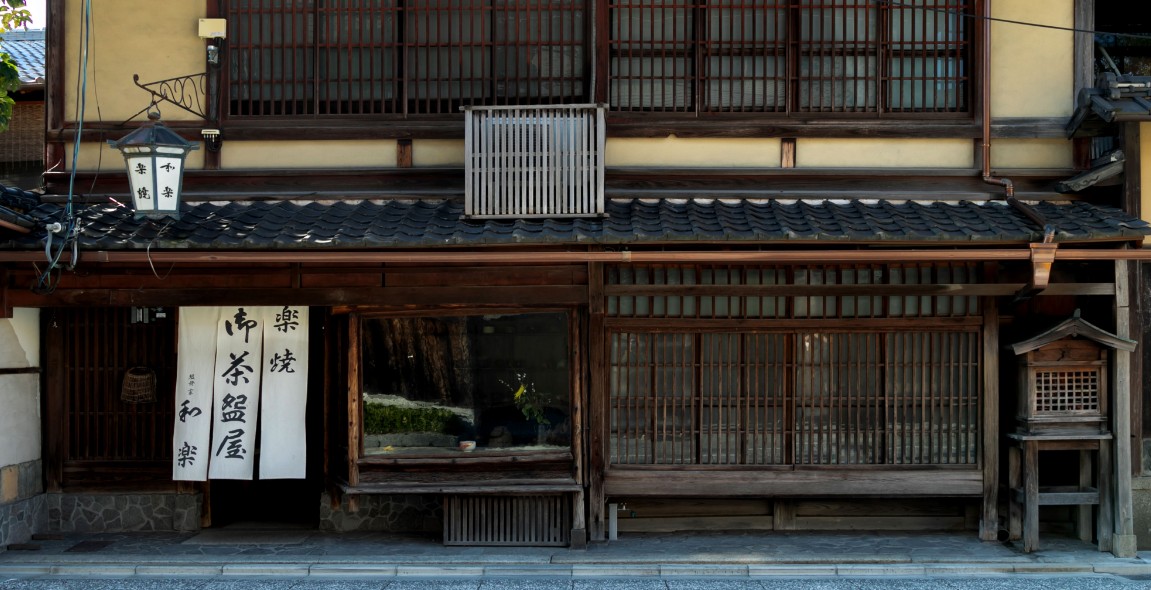

1st generation/
Shichizaemon established Raku Studio “Tanzakuya” about 190 years ago, at the end of the Edo period.
He was the owner of the Tanzakuro, a teahouse in front of the Yasaka Shrine in Gion, Kyoto.
It is not clear what kind of feelings the owner had when he started Raku Studio “Tanzakuya”, but it seems that at first he was producing pots, teapots, sake cups, etc., rather than tea ceremony utensils.
2nd generation/
Shichibei devoted himself to the study of Raku ware and established a reputation as a “Tanzakuka of Raku ware” while laying the foundation of this studio that continues to the present day.
3rd generation/
In the fall of 1918, General Admiral Heihachiro Togo visited our studio when he visited Kyoto, and was given the title “Waraku” in his own handwriting.
Shoshichi Kawasaki, the 4th generation of our studio, was very pleased with this honor and changed the name of the studio to “Raku Studio Waraku”.
Since then, it has been known as “Raku Studion Waraku” to this day.
Since 2016, Motoo Kawasaki has been the 8th generation.
July 1972 Born in Kyoto
March 2007 Completed the Kyoto City Industrial Research Institute Ceramics Course
March 2008 Graduated from Kyoto Prefectural School of Ceramics
April 2008 Joined Waraku Co., Ltd. Started making pottery
December 2010 Two-person exhibition held in Paris, France
June 2016 Succession to 8th generation
Motoo Kawasaki, the representative of our kiln, was born in Kyoto in 1972 and grew up watching his father work.
However, since he was a child, he did not intend to make Raku his life’s work.
I decided to make Raku ware when I was over 30.
For me, who was working as a company employee in Tokyo at the time, continuing as a company employee would mean going out Raku Studio Waraku.
Is that okay? I kept asking myself this question, and after a difficult choice, I decided to quit my job and pursue the path of pottery making Raku.
He graduated in 1998 with a major in nuclear engineering.
He worked as a boiler engineer for a thermal power plant for 8 years in Tokyo.
During his 8-year tenure, he was in charge of overseas projects for 6 years, he traveled to many countries(Australia, Thailand, Singapore, Germany, Italy, France, Algeria) on business and gained many valuable overseas experiences.
His experience at this time has become the foundation of his activities to introduce Raku ware tea bowls to people overseas.
In April 2008, I started making pottery at Raku Studio Waraku.
In December 2010, he held a two-person exhibition “Raku et Usushi” in Paris, France.
The people he met during the exhibition highly appreciated the Black Raku tea bowls.
It was a valuable experience to realize that Raku tea bowls, especially black Raku tea bowls, are accepted by many people overseas.
In June 2016, he succeeded to the 8th generation.
His predecessor served the representative for 47 years from 1969 to 2016.
In the meantime, with the opening of new studio and the spread of gas and electric kilns, more and more tea bowls have been produced, and Raku tea bowls have become more familiar to people at tea ceremonies.
One of the things I worked on as a representative was to disseminate information.
I am grateful for the many encounters I have had through the creation of my website, Instagram, and pamphlet creation.
It was also around this time that he came to think that it was his role to support the tea ceremony as one of the members that make up the big world.
Originally, Raku tableware was produced as a tool for chakaiseki, but in recent years it has been widely used by Japanese cuisine chefs.
However, many of the dishes that are carefully used by chefs were made 50 to 120 years ago, and it is difficult to obtain the necessary number of them now.
For this reason, he received a request to recreate Raku tableware at our kiln. For several years from 2020, during the corona crisis, we are focusing on making Raku ware tableware and expanding the types of Raku ware we produce.
Also, in the second half of 2022, we will be able to resume the exhibition of Raku tea bowls overseas, and we would like to increase our overseas activities in the future.
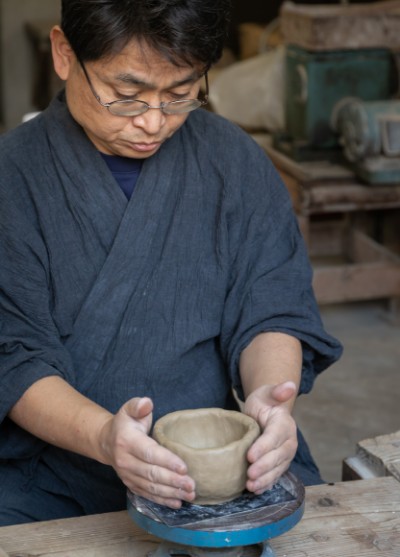
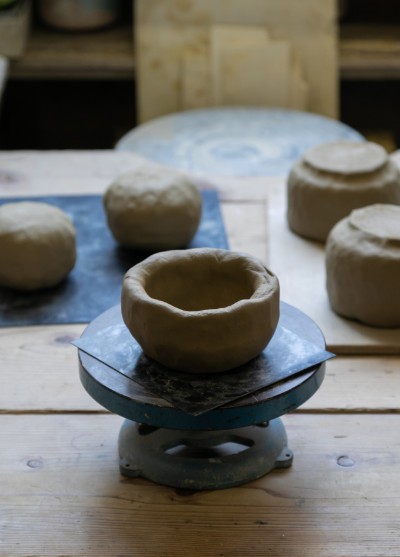
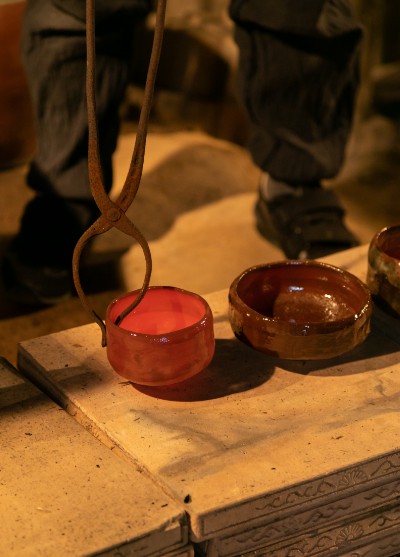
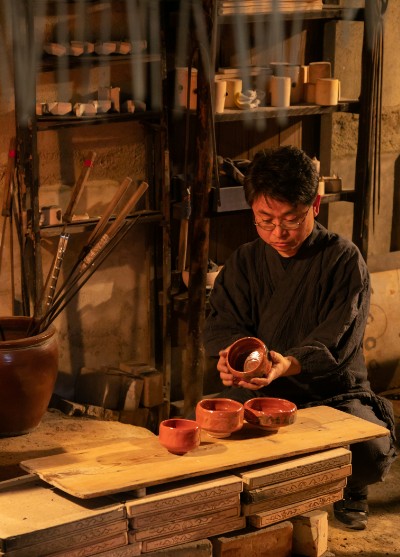
Shop/
Business Hour 9:00-17:00
Non Business Day Not decided (please ask to our shop)
Studio/
Business Hour 9:00-17:00
Non Business Day Saturday , Sunday , Japanese National Holiday
Studio tours are available at any time during the working days of the factory.
Shop , Studio/
Tel +81-(0)50-7122-0325
Google Map
Credit Card/
Credit card support basically possible.
*However, if the staff who can operate the terminal is not available, please pay in cash or by bank transfer.
Foreign language support: We will use a translator to support foreign languages.
Shipping: Supports domestic shipping. Actual shipping costs will be charged.
